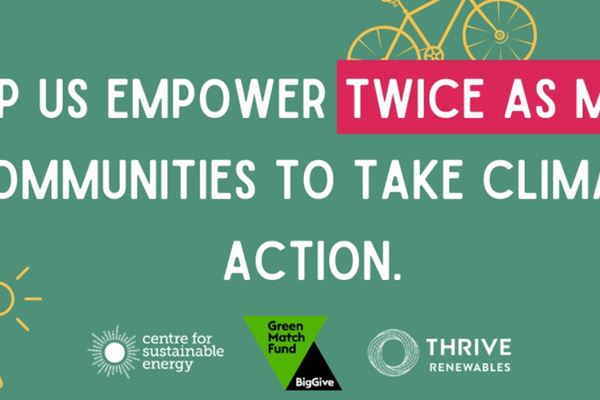In September, Prime Minister Rishi Sunak announced that he was easing the effective ban on new onshore wind farms in England following a campaign from 25 Conservative MPs, led by former COP26 president Sir Alok Sharma.
The ban, first introduced by former PM David Cameron in 2015, meant an objection from just one person could stop a new onshore wind turbine from being built in England. It also meant that any new development had to be constructed in an area identified as suitable for onshore wind as part of the council’s local plan (footnote 54 in the National Planning Policy Framework) – a requirement which is not applied to any other infrastructure project.
But with many UK households feeling the effects of the ongoing energy and cost of living crises, the government has faced increasing pressure to ease these planning restrictions so that the country can start benefitting from cheaper, cleaner power.
What exactly has the government said?
The government confirmed that it is streamlining planning permission for new onshore wind farms with immediate effect, claiming that the changes will allow ‘local areas [to] have a greater say in how onshore wind projects should be considered, ultimately resulting in electricity bill savings and increased national energy security’.
According to the government website, ‘The measures include broadening the ways that suitable locations can be identified, including by communities, and speeding up the process of allocating sites by giving alternatives to the local plan process. This will ensure the whole community has a say, not just a small number of objectors – paving the way for more onshore wind projects to come online where they have community support.’
“Overall, we welcome this micro adjustment away from a ban on onshore wind in England but feel that, in the context of a climate crisis and the urgency with which we need to address the financial and carbon cost of energy, this really isn’t adequate. Wind turbines should simply be treated the same as any other infrastructure by the planning system.
“We await further clarity on how communities will be able to demonstrate their support. In the meantime, as funders of the only onshore wind farm to be built in England so far this year, which is community owned, we continue to work with people and businesses to make projects happen and promote the benefits of local generation.” – Matthew Clayton, Managing Director, Thrive Renewables
One issue with the government’s announcement is the continued lack of clarity around ‘community support’ and how they will be expected to demonstrate this. We have a robust planning process in place for all other infrastructure projects, whether it be housing, roads or other renewable energy technologies, that allow for and take into account community feedback. So why, for onshore wind, are we asking communities to proactively evidence that they’re in support of a project?
The deviation in requirements suggests that there’s a presumption that the general public are against onshore wind. This is simply not the case – according to the government’s own figures, just 12% oppose a wind farm in their own community.
What does it mean moving forward?
While we await a secondary announcement in the Autumn, it looks like these changes will, at best, make it slightly less difficult to build new onshore windfarms in England.
We know that onshore wind can generate cleaner, cheaper and homegrown electricity that helps keep household bills down, but the government is failing to treat it like any other infrastructure project. What we really want to see is a level playing field and a removal of footnote 54 from the National Planning Policy Framework.
The Ambition Community Energy (ACE) turbine in Bristol is proof that onshore wind is not only popular with communities but can have tangible economic and social benefits too. Profits from electricity sales from the 4.2 MW turbine will be reinvested back into the Lawrence Weston community, while the ACE team are also planning to set up an Energy Learning Zone, which will give local residents the opportunity to upskill and learn about green careers.
As proud funders of the ACE turbine, the only onshore wind farm to be built in England so far this year, we will continue working with people and businesses to make projects happen and promote the benefits of local generation.




